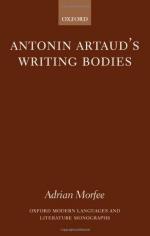|
This section contains 6,103 words (approx. 21 pages at 300 words per page) |

|
“Kerouac, Artaud, and the Baroque Period of the Three Stooges,” in Mosaic, Vol. 31, No. 4, December, 1998, pp. 83-98.
In the following essay, Sterritt argues that the writings of Jack Kerouac, the comedy of the Three Stooges, Kerouac's riffs on the Stooges, Artaud's writings about the theater of cruelty, and his wish for a body without organs are all related attempts to transcend the constraints of everyday life by the spirit of carnival.
American life in the 1950s era was famously marked by conservative discourses of consumerism, consensus, conformity, and cold war. Less frequently noted is the fact that these ideologies were challenged by a variety of interrogative, hostile, or downright negational counterparts—or “contravisions,” to borrow a term from Stan Brakhage, perhaps the most radical avant-garde filmmaker to emerge during the period (143). Such oppositional currents ranged from the socially skeptical writings of Paul Goodman and David Riesman to far-reaching...
|
This section contains 6,103 words (approx. 21 pages at 300 words per page) |

|


